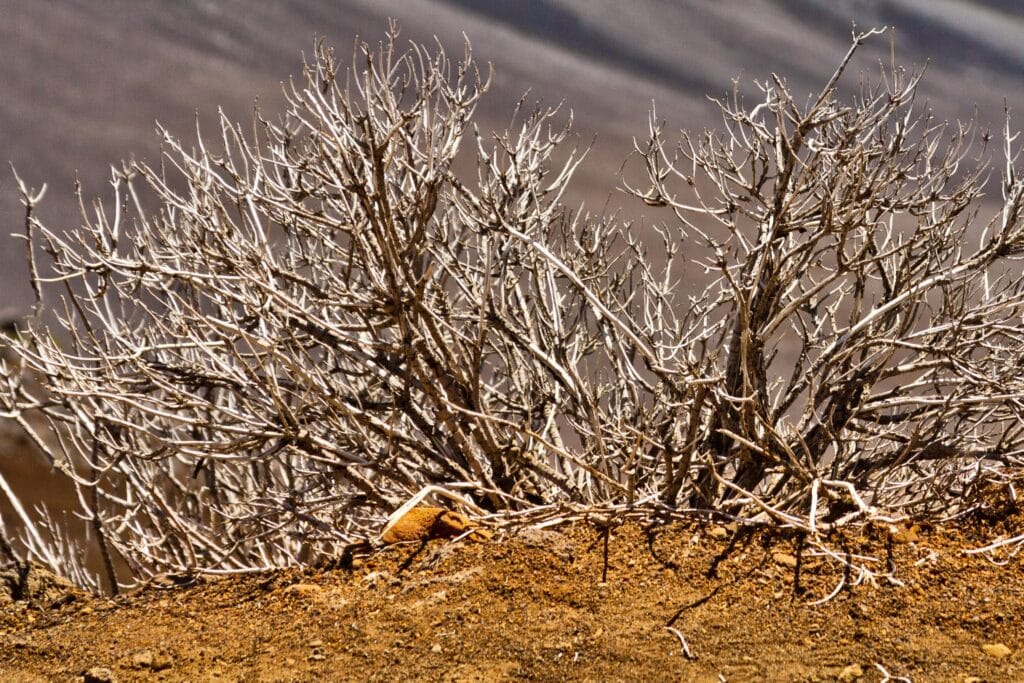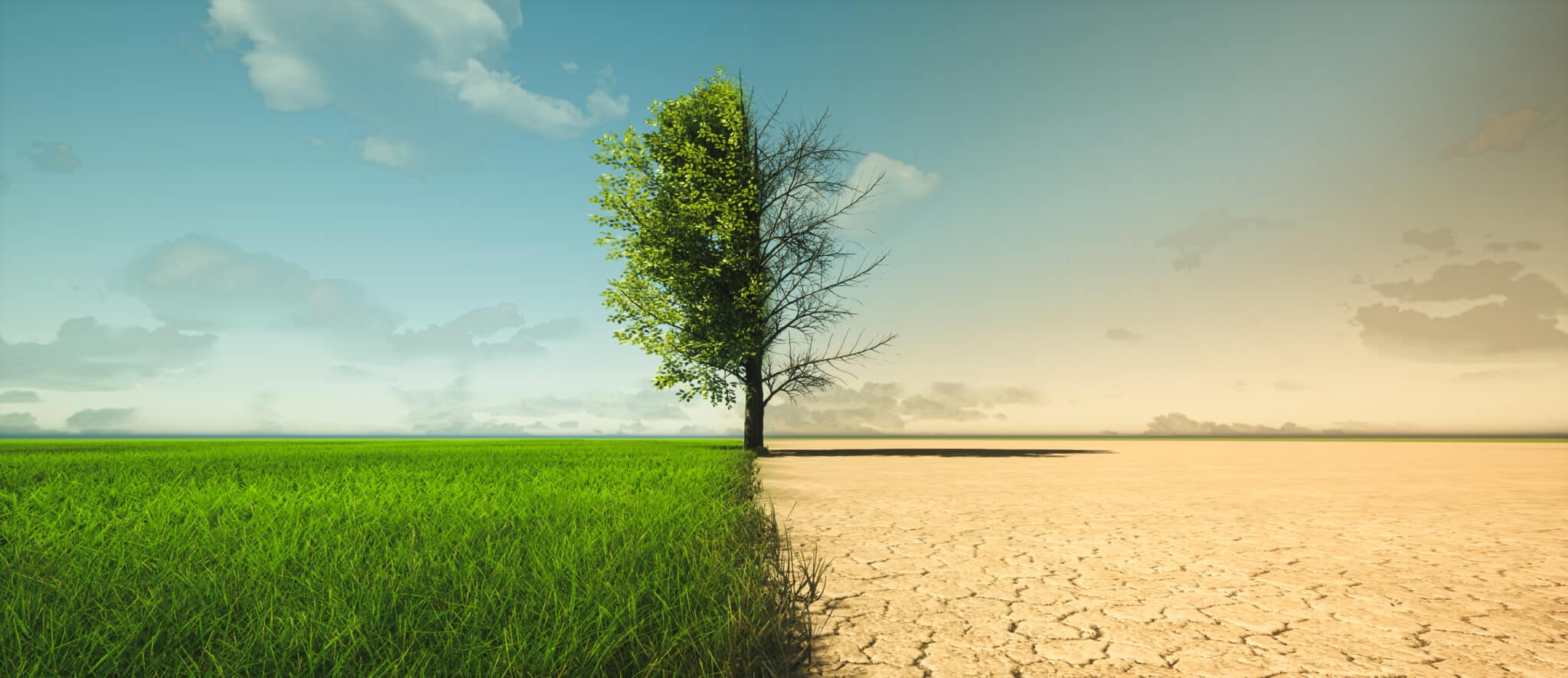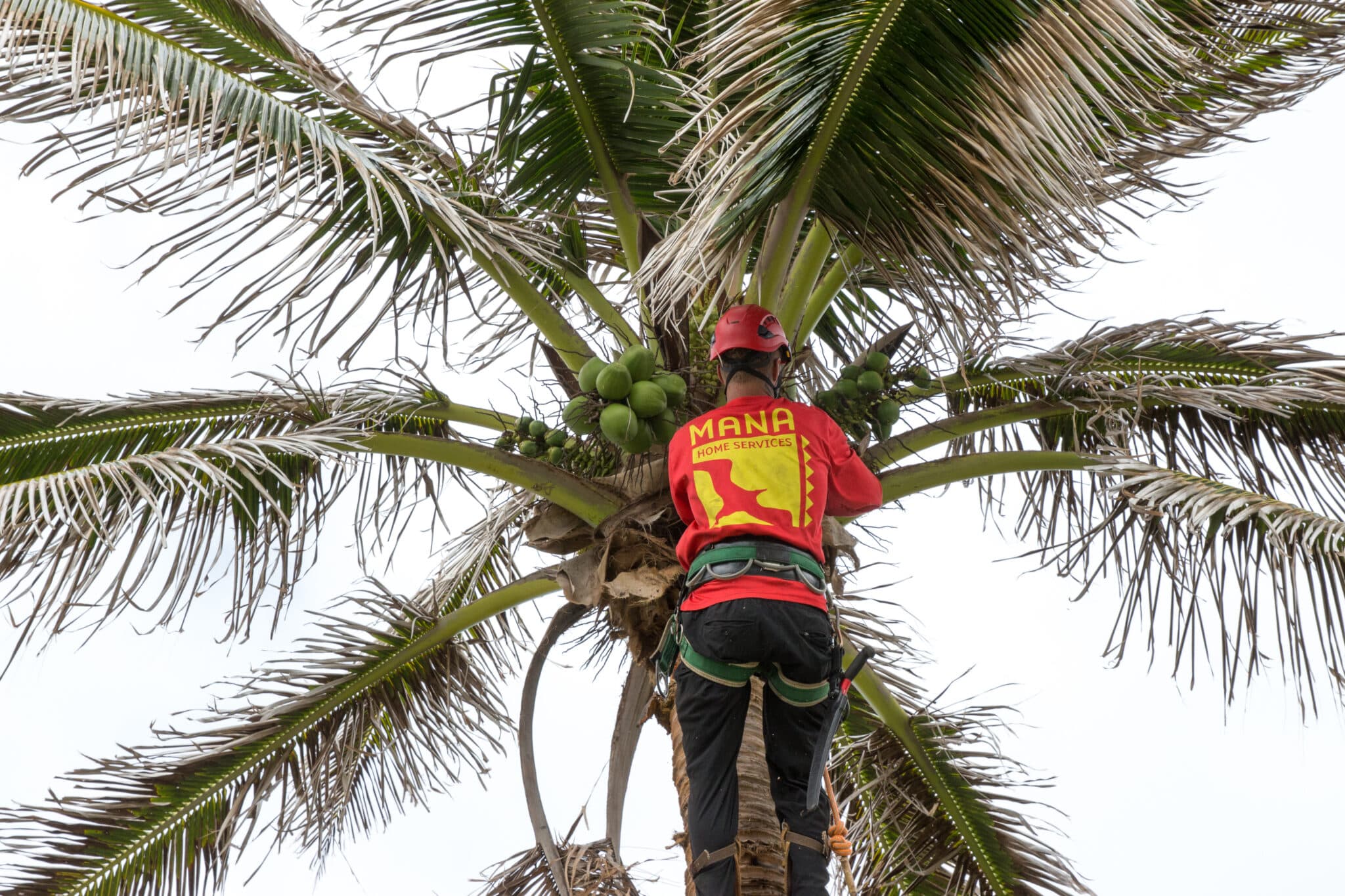In Hawaii, where the beauty of nature is unmatched, the health of our trees is crucial, especially during drought conditions. Homeowners in places like Kaneohe and Hawaii Kai understand the challenges posed by extended dry spells. To protect trees effectively, it’s essential to employ strategies that enhance their drought resistance. This guide will delve into practical methods to safeguard your trees, ensuring they remain robust and flourish even when water is scarce.
Understanding the specific needs of your trees during drought is the first step toward effective care. Different species may require distinct approaches, but common practices can benefit almost all types. By implementing smart watering techniques, improving soil health, and minimizing moisture loss, you can significantly boost your tree’s resilience. These practices not only protect trees but also contribute to their long-term vitality.
The impact of drought on tree health can be severe without proper precautions. Leaves may wilt, branches can become brittle, and, in extreme cases, trees might die. However, with the right knowledge and actions, you can prevent these adverse effects. This article will provide you with the necessary tools and techniques to maintain healthy, vibrant trees throughout the driest months.
Join us as we explore effective soil care tips, smart watering practices, and innovative ways to reduce moisture loss. By the end of this guide, you’ll be equipped to protect trees in your garden or landscape effectively, ensuring they continue to provide beauty and shade for years to come. Let’s work together to keep Hawaii’s trees thriving, even in the toughest conditions.
Table of Contents
ToggleUnderstanding Hawaii’s Drought Conditions
Understanding the unique drought conditions in Hawaii is crucial for homeowners looking to protect trees in their landscapes. The islands experience a distinct dry season, typically from May through October, when rainfall is scarce. This period can be particularly challenging in areas like Kaneohe and Hawaii Kai, where local microclimates can exacerbate dry conditions. Recognizing these patterns allows residents to anticipate and prepare for the needs of their trees during these critical months.
The intensity and duration of drought conditions can vary significantly across different parts of the island. For instance, leeward areas often face harsher droughts compared to their windward counterparts. This variability means that the strategies to protect trees must be tailored to specific local conditions. Homeowners must stay informed about the climatic trends in their specific region to effectively plan their tree care activities.
Moreover, understanding the historical data on drought patterns in Hawaii can help in predicting future dry spells. This knowledge is invaluable for long-term planning and implementing sustainable practices to protect trees. By preparing in advance, homeowners can mitigate the impact of drought on their gardens and landscapes, ensuring their trees not only survive but thrive.
Lastly, it’s important to engage with local resources and experts who understand the nuances of Hawaii’s climate. They can provide insights and recommendations tailored to the unique needs of your area. With their help, you can develop a more effective drought management strategy, enhancing your ability to protect trees during Hawaii’s dry seasons. This proactive approach is key to maintaining the health and beauty of your landscape in the face of changing environmental conditions.
The Importance of Tree Health in Drought Prone Areas
The health of trees in drought-prone areas like Hawaii is not merely an aesthetic concern but a crucial environmental one. Trees play a vital role in maintaining ecological balance, providing oxygen, and supporting wildlife. In areas such as Kaneohe and Hawaii Kai, where dry spells can be particularly intense, the need to protect trees becomes even more critical. Ensuring that these natural assets remain healthy helps in stabilizing local ecosystems and offers continued benefits to the community.
Maintaining tree health during prolonged periods of drought requires understanding their physiological responses to water stress. Trees under drought stress may slow down their growth, close their stomata to conserve water, and shed leaves to reduce transpiration. These natural survival strategies help them cope, but without adequate support, prolonged stress can lead to weakened defenses against pests and diseases. Homeowners can protect trees by providing conditions that help them manage these stresses more effectively.
Investing in the health of trees is also economically wise for property owners. Healthy, robust trees can significantly increase property values and reduce cooling costs by providing shade. In contrast, the cost of removing dead or diseased trees can be substantial. Therefore, actions taken to protect trees not only preserve natural beauty but also offer financial benefits. By employing strategic watering, proper mulching, and regular health assessments, homeowners can ensure their trees remain a valuable asset.
Furthermore, community-wide efforts to protect trees can amplify individual actions. Local governments and community groups in drought-prone areas can organize workshops and provide resources on the best practices for tree care during dry seasons. Such collaborative efforts can lead to healthier landscapes that are better equipped to withstand Hawaii’s challenging climate. Together, these strategies ensure that the region’s trees continue to thrive, supporting both the local environment and community well-being.
How to Protect Trees: Selecting Drought-Resistant Species
Choosing the right species is a pivotal step to protect trees from the harsh conditions of Hawaii’s drought seasons. In areas like Kaneohe and Hawaii Kai, selecting drought-resistant species can make a significant difference in landscape sustainability. These species are naturally equipped to survive in low-water conditions, often requiring less maintenance and water than their non-resistant counterparts. By focusing on these types of trees, homeowners can ensure their green spaces remain vibrant and resilient, even during extended dry spells.
Drought-resistant trees typically possess certain characteristics that make them ideal for arid conditions. These include deep root systems that tap into underground water supplies, leaves that minimize water loss, and thick barks to protect against heat and moisture evaporation. Species such as the Kiawe tree (Prosopis pallida), which is known for its deep rooting nature, or the resilient ‘Ōhi’a Lehua (Metrosideros polymorpha), thrive well in Hawaii’s varied climates and soils. Integrating these species into your landscape not only helps to protect trees but also reduces the need for frequent watering.
When planning your garden or landscape, consider the mature size and growth rate of drought-resistant trees. Some species might grow large and could potentially interfere with structures or underground utilities. A Tree Health Consultation with a local arborist or a landscaping expert can provide insights into the best species that fit the specific conditions of your property. This tailored approach ensures that each tree has the optimal chance for survival and growth, contributing positively to your property’s aesthetic and ecological balance.
Community involvement and knowledge sharing are also crucial in promoting the use of drought-resistant trees. Local nurseries and gardening clubs often hold workshops and provide resources about native and drought-resistant species suitable for Hawaii’s unique environment. Participating in these community resources can enhance your understanding and ability to protect trees effectively. Through collective effort and informed choices, residents can foster landscapes that are not only beautiful but also resilient against the challenges posed by climate and environmental changes.
Smart Watering Practices to Protect Trees
Smart watering practices are essential for maintaining the health of your trees during Hawaii’s dry seasons. Efficient water use helps conserve this precious resource while ensuring your trees receive the hydration they need to thrive. One effective method is to water deeply but infrequently, which encourages roots to grow deeper into the soil. This technique helps to protect trees by making them more resilient to periods of drought and reducing the frequency of watering needed.
In areas like Kaneohe and Hawaii Kai, where water conservation is crucial, utilizing drip irrigation systems can significantly improve water efficiency. These systems deliver water directly to the base of the tree, minimizing evaporation and runoff. By using a drip system, homeowners can ensure that water reaches the roots where it’s most needed. This method not only helps to protect trees but also promotes a healthier root system, which is vital for long-term tree health.
Timing is also a critical factor in smart watering practices. Watering your trees early in the morning or late in the evening can reduce water loss due to evaporation. During these cooler parts of the day, water can soak into the soil more effectively, providing maximum benefit to the trees. Additionally, adjusting your watering schedule according to the season and current weather conditions can help maintain the right moisture balance in the soil, essential for healthy tree growth.
Finally, mulching plays a supportive role in smart watering practices. A good layer of organic mulch around the base of your trees can help retain soil moisture, suppress weeds, and regulate soil temperature. Mulch acts as a barrier, reducing moisture evaporation and providing a steady supply of nutrients as it decomposes. By incorporating mulching into your watering routine, you can further enhance your efforts to protect trees, ensuring they remain a vibrant part of your landscape even during the toughest drought conditions.
Soil Care Tips to Enhance Moisture Retention
Proper soil care is a cornerstone of drought management strategies to protect trees, especially in areas like Kaneohe and Hawaii Kai. Enhancing soil quality can significantly improve water retention, providing a stable moisture reservoir for trees during dry spells. Incorporating organic matter such as compost into the soil can boost its ability to hold water and provide essential nutrients. This practice not only helps to protect trees but also improves the overall fertility of the soil, promoting healthier root systems and stronger trees.
Another effective soil care technique is the use of soil amendments like biochar. Biochar can greatly increase soil’s water retention capabilities and keep nutrients well-rooted within the soil matrix. It acts as a sponge, absorbing and retaining water during watering and releasing it slowly over time, which is crucial for maintaining moisture during prolonged dry periods. This method is particularly beneficial for sandy soils, which are common in some parts of Hawaii and tend to drain water quickly.
Cover cropping is also a valuable strategy for maintaining soil moisture. Planting cover crops such as clover or vetch during the off-season can protect the soil from direct sun exposure, reducing moisture evaporation. Once tilled into the soil, these crops add organic matter, enhancing soil structure and moisture retention. This practice not only helps to protect trees but also prepares the soil for future planting and improves its overall health.
Lastly, regular soil assessments are critical to ensure the effectiveness of your soil care strategies. Testing soil for texture, compaction, pH, and nutrient levels can provide insights into specific needs and adjustments required to optimize moisture retention. Tailoring your soil care practices based on these assessments can lead to more effective drought management and help protect trees from the stresses of water scarcity. By focusing on these soil care tips, homeowners can enhance their ability to maintain lush, resilient landscapes even during Hawaii’s toughest drought conditions.
Mulching Techniques to Reduce Moisture Loss
Mulching is an invaluable technique to reduce moisture loss, especially in drought-prone areas like Kaneohe and Hawaii Kai. By applying a layer of mulch around trees, homeowners can significantly decrease the rate of water evaporation from the soil. This not only conserves water but also helps protect trees by maintaining a cooler root environment and reducing stress during hot spells. Organic mulches like wood chips or straw are particularly effective, as they also break down over time, enriching the soil with nutrients.
The choice of mulch and the method of application play crucial roles in its effectiveness. It’s important to apply a thick enough layer, typically 2 to 4 inches, to effectively retain soil moisture and suppress weed growth. However, it’s equally important to avoid piling mulch against the tree trunk to prevent moisture-related diseases. Ensuring a proper mulch ring extends out to the drip line of the tree can maximize benefits, allowing the root system to access and retain water more efficiently.
In addition to moisture retention, mulching provides other significant benefits that help protect trees. It moderates soil temperature, keeping roots cooler in summer and warmer in winter, which is vital for the health of the tree. Mulch also prevents soil compaction caused by heavy rains, another common issue during Hawaii’s wetter seasons. This improved soil structure enhances root growth and increases the tree’s overall drought resilience.
For homeowners in Hawaii looking to protect trees, adopting mulching practices is a smart and effective strategy. Not only does it reduce the need for frequent watering, but it also contributes to a healthier, more sustainable landscape. By integrating mulching into regular tree care routines, residents can ensure their trees are better equipped to withstand the challenges of dry conditions, maintaining their beauty and ecological benefits for the community.
Pruning Strategies to Promote Tree Health
Pruning is a vital technique to maintain and protect trees, especially during drought conditions in Hawaii. Strategic pruning helps trees conserve energy and resources, which is crucial for their survival during water shortages. By removing dead or diseased branches, you reduce the tree’s water demand and improve its overall resilience. This practice not only enhances the tree’s health but also its aesthetic appeal, making it a critical component of drought management strategies in areas like Kaneohe.
In Hawaii Kai, homeowners can further protect trees by pruning during the dormant season. This timing minimizes stress on the trees as they are not actively growing and reduces the chance of infection from pruning wounds. It’s important to ensure that cuts are made properly to avoid damaging the tree. Clean, sharp tools should be used to make concise cuts that heal quickly, thus maintaining the tree’s strength and vitality.
Proper pruning also involves understanding the specific growth patterns and needs of each tree species. Some trees may require thinning to enhance airflow and light penetration, which can significantly improve their health and reduce the likelihood of disease. Others might need structural pruning to maintain stability and shape. This tailored approach helps not only to protect trees but also to encourage a robust and vibrant canopy that can better withstand the harsh conditions of a drought.
Lastly, while DIY pruning is possible, consulting with a professional arborist is advisable for the best results. Arborists can provide expert guidance on the best pruning techniques and schedules for your specific trees and local conditions. This expert input is invaluable in ensuring that your pruning efforts are effective and truly beneficial for the tree’s health. By integrating professional advice with regular care, homeowners can effectively protect trees and ensure they continue to thrive despite the challenges posed by drought.
Monitoring and Maintaining Tree Health
Monitoring and maintaining tree health is essential for homeowners in Hawaii, particularly in areas like Kaneohe and Hawaii Kai, where drought conditions can severely impact tree vitality. Regular health assessments are crucial to detect early signs of stress or disease in trees. These evaluations help in taking timely actions to protect trees, ensuring they continue to thrive despite environmental challenges. By keeping a close eye on their condition, you can intervene before minor issues become severe, safeguarding the landscape’s overall health.
One effective way to monitor tree health is through visual inspections. Look for changes in leaf color, premature leaf drop, or stunted growth, which can all be indicators of stress. Additionally, checking for bark cracks or the presence of pests can provide early warnings of potential problems. These inspections should be conducted seasonally to ensure that any negative changes are caught and addressed promptly. This proactive approach is key to maintaining strong, healthy trees in your garden.
Technology also offers innovative solutions for monitoring tree health. Devices like moisture sensors can be installed in the soil to provide real-time data on the moisture levels around your trees. This information can be incredibly valuable in managing watering schedules and ensuring that trees receive adequate hydration during dry spells. Furthermore, drone technology can be used for aerial inspections, offering a broader view of tree canopies and identifying issues that may not be visible from the ground.
Finally, engaging with professionals such as certified arborists can provide deeper insights into the specific needs of your trees. These experts can perform detailed health assessments, recommend treatment options, and provide tailored advice to protect trees effectively. Their expertise can be particularly beneficial in managing the unique challenges posed by Hawaii’s climate, ensuring that your efforts to maintain tree health are as effective as possible. By leveraging both technology and professional expertise, you can create a comprehensive care plan that supports the longevity and beauty of your trees.
Frequently Asked Questions
What are the signs of drought stress in Hawaiian trees?
Signs of drought stress in Hawaiian trees include wilting leaves, brittle branches, and a dull, faded color in the foliage. Homeowners may also notice slower growth rates and premature leaf drop, which are clear indicators that the tree is struggling to retain moisture. To protect trees effectively, it’s essential to recognize these symptoms early. Implementing timely interventions can help mitigate the adverse effects of drought and maintain the health and beauty of your landscape.
How can mulching help protect trees from drought in Hawaii?
Mulching is a highly effective method to protect trees from drought in Hawaii by conserving soil moisture and reducing water evaporation. By applying a layer of organic material around the base of a tree, mulch acts as a barrier that keeps the soil cool and moist, even during intense heat. This practice not only helps retain water but also suppresses weed growth, which competes with trees for vital resources. Additionally, as mulch decomposes, it enriches the soil with nutrients, further enhancing the tree’s ability to withstand dry conditions.
What irrigation techniques are best to protect trees in Hawaii?
To protect trees in Hawaii effectively during drought, employing strategic irrigation techniques is crucial. Drip irrigation is one of the best methods, as it delivers water directly to the tree’s root zone, minimizing waste and reducing evaporation. Another valuable technique is the use of soaker hoses, which ensure deep watering that encourages strong root development. These methods not only conserve water but also ensure that trees receive the moisture they need to thrive during dry spells.
How often should trees be watered during a drought in Hawaii?
During a drought in Hawaii, the frequency of watering trees should be adjusted to ensure they remain hydrated without overuse of water. Typically, mature trees benefit from deep watering every two to three weeks, allowing moisture to penetrate deeply into the soil. For younger or newly planted trees, a weekly watering schedule may be necessary to protect trees and support their growth. Always check the soil moisture levels before watering to avoid unnecessary water application and to promote efficient water use in protecting your trees.
What tree species are most resistant to drought in Hawaii?
In Hawaii, several tree species exhibit strong drought resistance, making them ideal for local landscapes. Kiawe trees (Prosopis pallida) are notably resilient, thriving in dry conditions with their deep root systems. Another hardy species is the ‘ōhi’a lehua (Metrosideros polymorpha), which is well-adapted to various environments, including volcanic soils with low moisture. Additionally, the wiliwili tree (Erythrina sandwicensis) is celebrated for its drought tolerance, often found in arid, coastal areas. These species are excellent choices to protect trees and maintain greenery even during prolonged dry spells.




